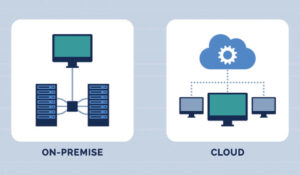Valur Svansson of Lifesize shares insights on moving your contact centre to the cloud.
Stop me if you’ve heard this one before: One day your CFO or CEO calls you into their office — the same one who’s spent years telling you: “Don’t even bother thinking about cloud, because we are not tearing down our entire contact centre to try some ‘harebrained’ scheme.” Except this time, something’s different.
Maybe there’s new pressure to spin up and support work-from-home (WFH) agents faster and more efficiently; maybe your legacy system’s contract is finally up; or maybe they just came back from a (virtual) conference with dollar signs in their eyes, after learning about all the potential cost savings of CCaaS.
Now, suddenly and for whatever reason, they’re scratching their head and asking you: “Uhh, what if we did, like, half a cloud?”
They admit that they need the business value of cloud, but they’re still reluctant about the potential risk. So if you’re a contact centre director or VP of customer care, what do you tell them? Can you really do half a cloud?
Real Cloud Benefits Require Real Cloud Solutions
The good news is, you absolutely can take a gradual, piecemeal approach to cloud — adopting various elements of CCaaS at your own pace, rather than trying to replace your entire on-prem system all at once. But to do it right, you’ve got to be extremely clear about what “cloud” actually means.
With all the different possible combinations of hybrid and multi-cloud architectures — incorporating different flavours of IaaS, PaaS and SaaS — “cloud” can be a slippery term to begin with.
Then you throw in all the marketing hype, with many vendors claiming cloud that may not actually have cloud. It gets muddled quickly, especially for us less-technical folks on the CX side.
Here are a few qualities that define what we might call “full-blown cloud” (for lack of a better term):
- A hierarchical structure — From a technology stack standpoint, you’re able to administer your own platform and administer platforms underneath, as if you were on-prem.
- True multi-tenancy — Shared data and storage mean shared costs.
- Built on “-as-a-service” technologies — It’s really not SaaS unless it’s on PaaS, enabling you to easily administer, tenantize and segment data.
The key catch is that just because you’re doing hosted doesn’t mean you’re doing cloud; this is where that “half a cloud” mentality can really get you into trouble. If your solution still has you maintaining physical hardware in a data centre somewhere — whether it’s your data centre or not — it’s not going to deliver true cloud benefits, no matter what any vendor’s marketing says.
Lose the Tin, Reduce the Risk
Whenever you’ve got hardware in a rack — whether it’s on-prem or in a hosted environment — you’re paying for the tin. And tin’s just like fruit: it goes bad. Metal rusts. Hardware grows outdated.
That’s why the ability to leverage someone else’s investment in that tin is such a core part of cloud’s value proposition.
The further you can get away from having tin in your building somewhere, the more you lower both costs and risk. And isn’t that what you and your CFO or CEO are trying to get out of CCaaS in the first place (in addition to the better flexibility, scalability and support for features like video and AI)?
The 3 Key Takeaways
So what do you do, at the end of the day, when your CFO or CEO wants to do “half a cloud?” You dip your toe in, and get used to the water. These takeaways will help you take the plunge:

Valur Svansson
- Half a cloud shouldn’t mean half measures — Remember, if you desire cloud benefits, you need true cloud properties. It’s okay to take it slow. But not if that means you’re still going to be managing a ton of tin 10 years down the road.
- Take one step at a time — The best way to do “half a cloud” is simply to get started on the cloud migration. One major benefit of CCaaS is that, unlike a lot of traditional on-prem systems that involve massive contracts, there are usually a range of flexible migration paths and options to “try before you buy.”
- Choose the path that’s right for your business — Ask yourself, which components of your contact centre solution are costing you the most, that you have to stay on top of on a regular basis? Can you move some of those services into the cloud? And if so, maybe you can identify the specific employees who use those services, then segment them and grow a base of CCaaS adoption from there?
Author: Guest Author
Published On: 14th Jan 2021 - Last modified: 19th Jan 2021
Read more about - Guest Blogs, Lifesize





































